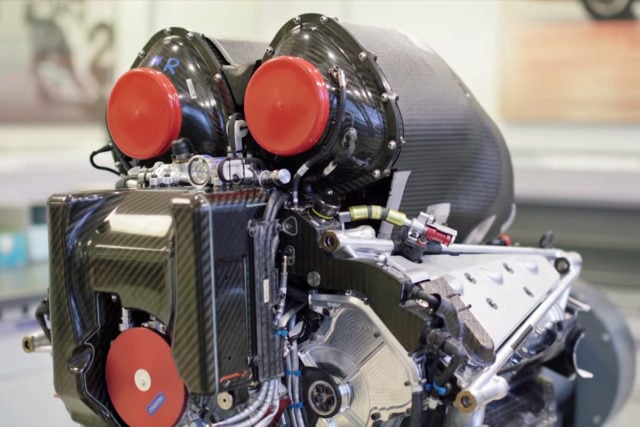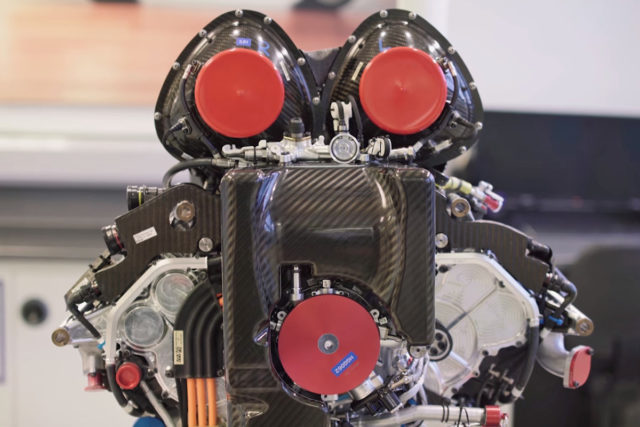Considered by some to be the pinnacle of engine technology, R&D budgets for Formula 1 engines are astronomical. However, that’s not due to the use of exotic materials, but rather because they are trying to squeeze every last drop of power and longevity out of a set of rules that makes other rulebooks look like elementary-school reading. Mercedes-AMG has just released this video, in which Owen Jones, the Head of Performance and Controls at Mercedes-AMG High Performance Powertrains, reveals the impressive performance landmark they’ve achieved with the 2017 Formula 1 engine: the M08 EQ Power+. Using the 50th engine to come out of the shop this season, the Mercedes-AMG team put the engine on the dyno, in hopes of achieving what Owens calls “Something we’ve been trying to achieve for a while now.”
All Formula 1 teams are limited by FIA rules in not only the type of fuel, but also the actual amount of fuel consumed, so there is a fixed amount of potential chemical energy the combination has available to it. Knowing this, Owens and his team have been looking to increase the efficiency of the powerplant. According to Owens, most engines only convert 30-to-35-percent of the potential energy available in the fuel into usable horsepower. With the particular engine in the video – unit GH-50 – they achieved a remarkable 50-percent thermal efficiency figure from the 1.6-liter 90-degeree V6 turbo-hybrid screamer, marking the first time any of their competition engines have made more useful power than waste energy.
Owens explains the process to increase efficiency as a multi-faceted endeavor. The team starts with the actual design of the engine and how the various design elements – combustion chambers, valves, and intake and exhaust runners – flow. Then they address minimizing losses by reducing friction anywhere and everywhere they can, in both the electrical and internal-combustion powerplants. They also optimize the hybrid electrical system, which adds efficiency and an extra boost of power (approximately 161 horsepower for 33 seconds per lap, per FIA regulations) to the already-stout combination when the situation demands.
HYBRID THEORY
Owens is quick to credit the hybrid system for doing its part in achieving such impressive efficiencies. The Energy Recovery System (ERS) consists of two collector systems, which charge batteries and then turn that electrical energy into mechanical energy via an electric motor attached to the engine. One kinetic collector (MGU-K) harnesses energy from the brakes, while the more interesting one – the MGU-H – extracts energy from the exhaust gasses, via the hot side of the engine’s turbocharger.
Instead of the turbine only generating airflow via an impeller, it turns a generator unit that resides between the impeller and turbine that creates electricity, which is stored for later use. Since the amount of energy that is allowed to be “harvested” and used from the turbine-powered MGU-H (as opposed to the tightly regulated harvest and output specs of the MGU-K), making sure the systems are imposing a minimum of restriction on the internal combustion portion of the engine – while maximizing its output – has been an additional area of efficiency improvement for Owens and his team.
The ERS is no magic wand that has allowed the M08 EQ Power+ to just breeze past the halfway point without much effort, as the 50-percent mark represents significant improvements over the first iteration of the hybrid system that came on-scene three years ago. Even more impressive, is the fact that there are no particularly exotic materials used in the engine, according to Owens, and that there are plans to use a version of the M08 EQ Power+ engine in a road car – an exotic prototype known as Project One. However, it should be noted, that the 50-percent efficiency mark has only been achieved in a test cell, not in actual use in a Formula 1 chassis. That will come soon enough.

